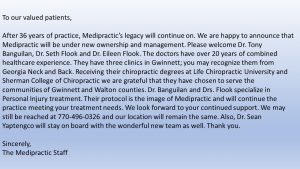
When your body is involved in trauma, your neck is one of your most vulnerable areas. Whiplash, the hard and fast forward-backward movement of the neck, can cause pain that can last well after other injuries have healed. To understand why your neck is so sore, it helps to know the anatomy involved.
Whiplash can be a complicated diagnosis as the doctor tries to figure out exactly which parts of the spine have been affected. And there are a lot of complex parts to your cervical spine—the technical name for your neck. The cervical spine begins at the base of the skull. It contains seven small vertebrae (bones), which doctors label C1 to C7 (the 'C' means cervical). The numbers 1 to 7 indicate the level of the vertebrae. C1 is closest to the skull, while C7 is closest to the chest.
In between each vertebra are tough fibrous shock-absorbing pads called the intervertebral discs. (These discs are what slide back and forth during the trauma.) Each disc is made up of a tire-like outer band and a gel-like inner substance. The outer band is called the annulus fibrosus; the inner part is called the nucleus pulposus.
In addition to bones and discs, your cervical spine also includes the upper region of the spinal cord, eight nerve roots, an elaborate system of arteries and veins, 32 muscles for strength, and numerous ligaments. For such a small area, there is a lot to your neck. That means that there are a lot of parts that can be injured when you have whiplash.
Remarkably, the cervical spine supports the full weight of your head, which is usually about 8 pounds—yet no other region of the spine has such freedom of movement. The cervical spine can move your head in nearly every direction: 90° of forward motion, 90° of backward motion, 180° of side to side motion, and almost 120° of tilt to either shoulder.
Unfortunately, this flexibility makes the neck very susceptible to pain and injury, such as whiplash. In whiplash, those 15 pounds are dramatically tossed frontwards then backwards—that's one important reason to wear seat belts properly and use airbags whenever possible.


 Higher levels of…
Higher levels of…